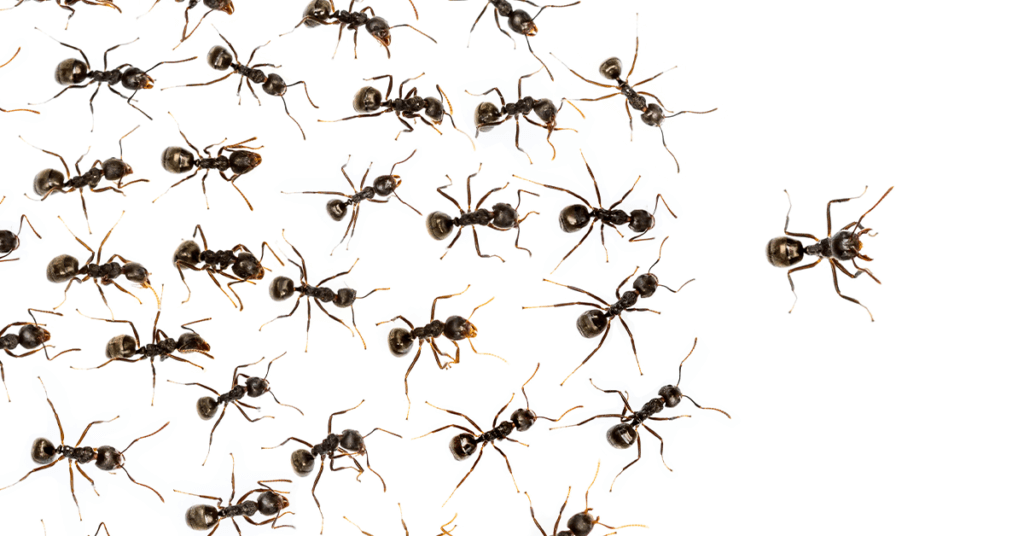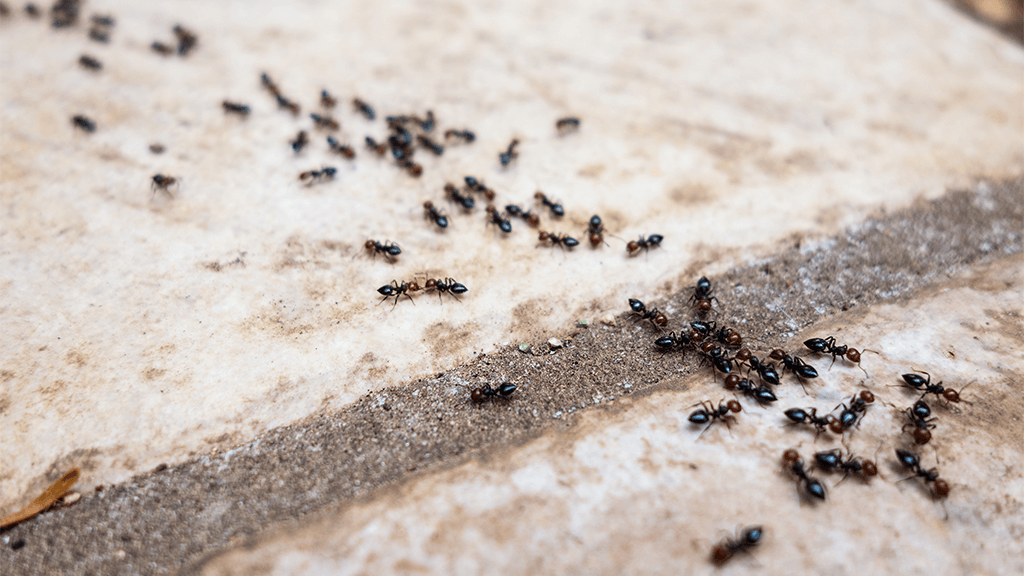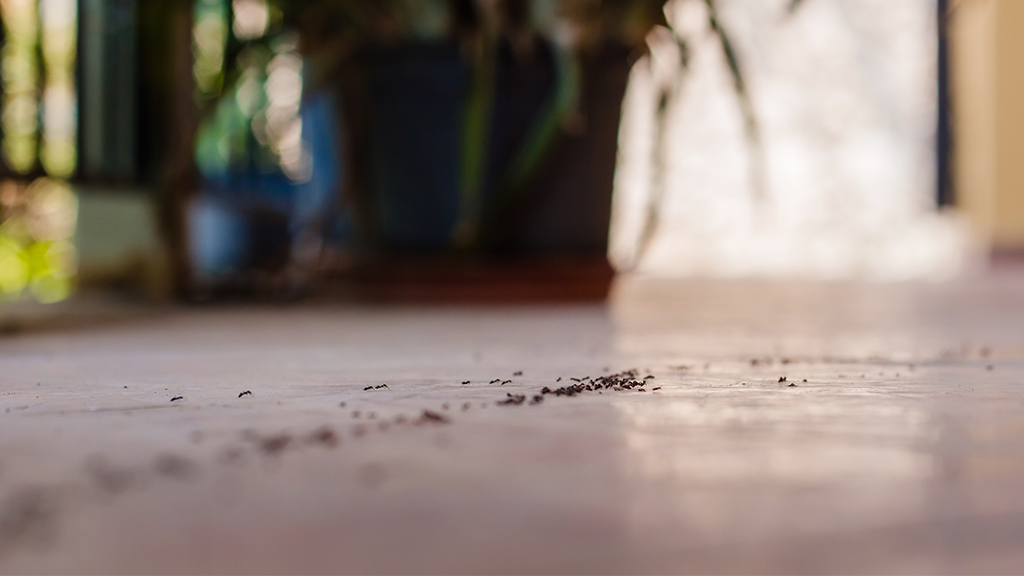Invisible Highways: Getting Rid of Insect Pheromone Trails

If you’ve just spotted a single-file line of ants trekking across the floor, you may be tempted to grab your flattest, widest shoe and show them who’s boss. The defined trail they’re making is no accident, though—those ant scavengers are following pheromone trails, natural scent chemicals left behind by scouts to guide their peers toward promising food and water sources.
Intercepting this chemical communication can go a long way in preventing pesky bugs. Spare yourself a good shoe cleaning and read on to discover how to wipe out pheromone trails to send intruding pests far away.
WHAT ARE PHEROMONE TRAILS?
Social insects (those who swarm, colonize, or otherwise gather in large groups) require many modes of communication to stick together and keep their hives and nests well functioning. Because their eyesight is generally less than ideal, insects such as wasps, bees, ants, and termites use their antennae and other senses to sense pheromone messages left by fellow insects to direct them to food, water, and safety.
Disrupting a pheromone trail not only disorients insects scavenging for resources, but also is an environmentally safe way to control pests, particularly in sensitive areas like kitchen counters or near pet food and water. Insects with no clear pheromone path or directive will be deterred without the promise of safety and are far less likely to travel into uncharted territory, making your home a less-likely target for swarms and groups.
TACKLING TRAILS
While a few passes with the mop won’t always take care of pheromone trails, eliminating these invisible highways is simpler than it may seem.

IDENTIFY ROUTES
The first step in wiping out organized pheromone trails is discovering where they are to begin with. Since humans can’t see or smell the pheromones, observing the pest activity itself is the best way to deduce where the trails are. Insects will often reveal trails through the traffic of workers back and forth, but some pathways may still be in our spatial blind spots.
Pick up a few sticky traps and place them near presumed trails to track pest activity. Employing these devices will not only aid in pathway revelation, they will also help to control pest populations themselves. Because social insects send scavengers out to collect food for the whole crowd, take care to watch activity both to and from these traps. A few days of observation, while leaving pests undisturbed, should uncover the most likely pheromone paths and provide insight for your next steps.

MASK THE SCENT
Once trails are identified, it’s time to intercept the pheromone messages scattered along the pathways. Just like lighting a candle can overpower other scents in our homes, various spices, oils, and powders can be used to disrupt and disorient pests on their hunt for resources, and many of these solutions are already sitting in your cabinet.
Essential oils, powders, or raw forms of cinnamon, chili powder, clove, tea tree, citrus, lemongrass, and peppermint can be used to mask pheromone scents and confuse foraging pests. For maximum effectiveness, place undiluted solutions near potential pest entrances, along pathways, near colonies or hives, or in other suspected hot spots.

MAKE IT CLEAN
Pests aren’t in your home and garden by accident. Much to our dismay, they were most likely invited by the promise of water, food, and safe shelter. Before grabbing the necessary supplies to clean up and deodorize pheromone trails, grab a few extra solutions as well to clean the surrounding areas, too. Sweep up loose crumbs and drops that attracted pests in the first place and ensure food is stored properly in airtight containers.
After cleaning up the messes that invited pests in the first place, deal with the pheromone trails with a few household cleaners you likely already have on hand. A simple water and baking soda mixture will work its deodorizing magic when mixed to form a thick paste and after a little elbow grease to scrub the pheromones away. Windex and other glass cleaners can be sprayed on trails to effectively deodorize and clear chemical pheromones, while vinegar can be mixed 50/50 with water and applied to the same effect.

CREATE A SEAL
All that hard work could be for naught if old pheromone trails are simply replaced with new ones by pests that still manage to find their way into your home. To keep pesky bugs out, take a good look at any doors and windows to examine whether seals or weather stripping needs to be replaced. Grab a caulking gun and hunt around the perimeter of your home for any gaps, cracks, or holes that need to be sealed, and repair any larger holes with sealant.
With social insects of all kinds leaving pheromone trails, it’s important to look in a variety of places. A trail of termites could be finding their way in through an obscured corner, while a population of wasps could be gathering higher than you might think to check. With a ladder and a keen eye, your home can be safeguarded from intruding pests in no time.
Hijacking the pheromone trails left by bothersome bugs is a potent means of pest control. Without these chemical messages assuring food, water, and safety, pests are less likely to stick around and will be forced to forage elsewhere. If you’ve done all you can and pests don’t seem to budge, fear not. Our team of experts is at the ready to help you gain the upper hand and say goodbye to intruding pests.


